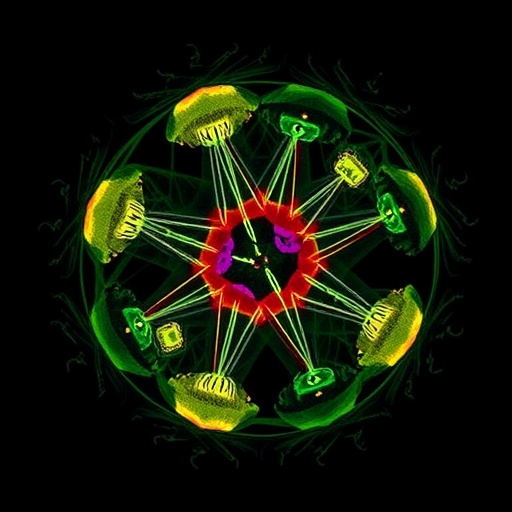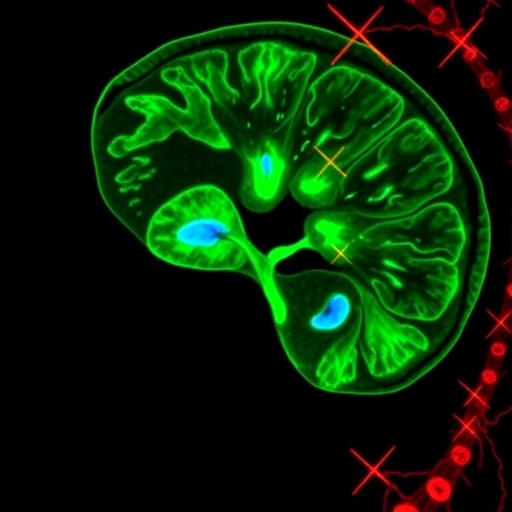A groundbreaking advancement in immunological research has been achieved through the development of a method that maintains the viability and functionality of human lymph node tissue outside the body for extended durations. This novel technique, pioneered by researchers at the College of Design and Engineering (CDE) of the National University of Singapore (NUS) in collaboration with the National Cancer Centre Singapore, ushers in a new era of immune system studies by offering an unprecedented window into the dynamic processes that govern human adaptive immunity. This breakthrough could revolutionize how scientists investigate immune responses to infections, vaccines, and cancer without relying on animal models or oversimplified cell cultures.
Central to this innovation is the use of a bioengineered hydrogel scaffold that envelops thin slices of lymph node tissue, preserving both its microarchitecture and cellular viability for up to a week. Traditionally, lymph node explants degrade rapidly in vitro, losing structural integrity and immunological function within one or two days, thereby limiting meaningful analyses. The hydrogel utilized in this approach is hyaluronan-based, biomimicking the native extracellular matrix to sustain the tissue’s three-dimensional environment, thus facilitating more physiologically relevant conditions for immune cell interactions.
Lymph nodes, shaped like small beans, are pivotal immune hubs where antigen presentation and lymphocyte activation occur. However, recapitulating this complexity outside a living organism has been a formidable challenge. Often, immunological research depends heavily on animal models or simplified two-dimensional cultures that fail to capture the true intricacies of human immune responses. This newly engineered system overcomes these obstacles by maintaining the native spatial arrangement and cellular diversity of human lymphoid tissue, allowing researchers to observe real-time immune dynamics with remarkable fidelity.
The team sourced non-involved lymph node tissues from head and neck cancer patients undergoing surgical resections, meticulously preparing thin slices to be embedded within the hydrogel matrix. This innovative embedding strategy creates a supportive microenvironment, preventing the rapid tissue breakdown typically observed in suspension cultures. Through this, the explants retained their size and histological features while sustaining cellular metabolism and signaling pathways critical for immune function over a significantly prolonged period.
Upon exposure to immunological stimuli—including autologous cancer cells and COVID-19 mRNA vaccines—the lymph node explants demonstrated robust immune responsiveness. The tissues secreted cytokines and chemokines indicative of immune activation, recruited and activated immune cell populations, and even synthesized antibodies. Remarkably, one sample displayed an active immune signature prior to vaccine administration, suggesting the system’s capability to reflect a patient’s unique immunological history, shaped by prior infections or immunizations.
Assistant Professor Eliza Fong, from NUS’s Department of Biomedical Engineering and co-leader of the study, emphasized the platform’s transformative potential. By faithfully replicating human immune tissue behavior ex vivo, it affords researchers a superior experimental model that captures interindividual variability in immune responses. This granularity is vital for advancing personalized medicine approaches, tailoring vaccines, and immunotherapies to suit individual patient profiles more accurately than preclinical models allow.
Furthermore, the research underscores the importance of preserving tissue architecture, as the spatial organization within lymph nodes orchestrates complex cell-cell communications essential for effective immunity. The hydrogel scaffold ensures that critical microenvironments—such as germinal centers where B cells mature—remain intact and operable. This preservation enables detailed mechanistic studies of adaptive immunity, including how immune cells migrate, proliferate, and interact in response to pathogens or tumor antigens.
While the current system sustains tissue viability and functionality for approximately one week, ongoing efforts aim to extend this longevity and replicate physiological parameters more comprehensively. Future refinements include integrating fluid dynamics to mimic lymph flow, which plays a crucial role in immune cell trafficking and antigen delivery. Such enhancements would create an even more faithful in vitro immune microenvironment, further bridging the gap between laboratory models and human biology.
The implications of this work extend to the preclinical evaluation of vaccines and immunotherapies. By providing a human-relevant testing platform that bypasses the limitations of animal models, it promises to accelerate the development pipeline for new treatments. Moreover, it could reduce reliance on animal experimentation, aligning with ethical imperatives and potentially increasing the predictive accuracy of immune-mediated therapeutic responses.
Professor N Gopalakrishna Iyer, a senior consultant at the National Cancer Centre Singapore and co-leader of this project, highlighted the model’s capacity to reveal the temporal evolution of immune responses. Tracking immune kinetics in real time within preserved human tissue opens the door to novel insights into disease mechanisms, vaccine efficacy, and immune escape phenomena in cancer and infectious diseases.
This pioneering research was detailed in the Cell Press journal Trends in Biotechnology on 29 August 2025, marking a significant milestone in immunological bioengineering. The collaborative efforts exemplify how interdisciplinary approaches—melding biomaterials science, tissue engineering, and clinical insights—can converge to address long-standing challenges in understanding human immunity.
Ultimately, the creation of extended human lymph node explants represents a powerful new tool that will reshape immunological research and therapeutic development. As the platform evolves, it holds promise for unraveling the complexities of human adaptive immunity with unparalleled precision, paving the way for more effective, tailored disease interventions in the near future.
Subject of Research: Cells
Article Title: Extended human lymph node explants for evaluation of adaptive immunity
News Publication Date: 29-Aug-2025
Web References: 10.1016/j.tibtech.2025.07.020
Image Credits: College of Design and Engineering at National University of Singapore
Tags: adaptive immunity investigationalternatives to animal modelsbioengineered lymph nodescancer immunology advancementsdynamic immune processesextracellular matrix biomimicryhuman immunity researchhyaluronan-based hydrogelimmune response analysis techniquesimmune system studiesimmunological function preservationlymph node tissue viability





